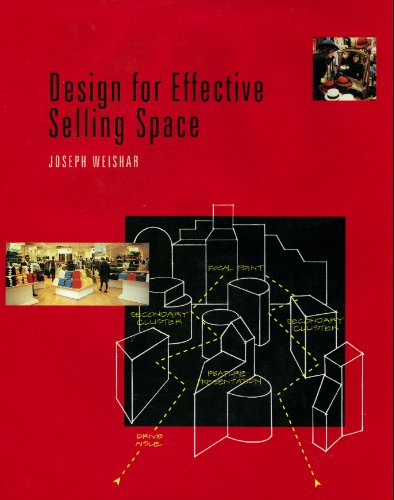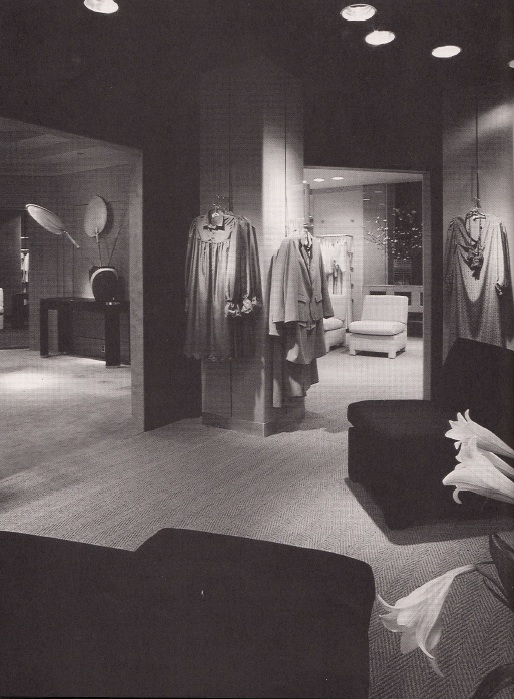Joseph Weishar describes the the design of ideal selling spaces:

The customer’s first impression of the store’s environment is the most lasting. It is created by a balance of all the elements of the store’s design and presentation of the merchandise.
Designers who use market information to plan a store for their retail client must also use the classical, traditional, historical, repetitive actions of customers in a market place. Designers and merchants can, to an astonishing degree, obtain specific desired results from customers by understanding what those customers expect, and then giving them more than their expectations. The pieces that form those expectations are the keys to entice targeted customers. The essential actions of the customers-first as people, and then as a shoppers- provide the basis for continuing this enticement inside the store.
Retailers and designers must learn to correctly interpret and verbalize the response of the customer. There is a vocabulary that can be used to properly express the actions and reactions of all shoppers. The transfer of that information allows the staff to set the department to take advantage of the natural shopping tendencies of the store’s customers.
Only four percent of all customers will inform the store of a poor shopping experience. This makes it all the more important for store owners and designers to comprehend customers’ actions. Design can account for the creation of possibilities that will permit the maximum potential of the operation. In fact, the design and designer form a conduit, or a bridge, that visually and physically translates historical market and sales data into a functional, practical, aesthetically pleasing shop. Although there are many ways to use hard facts to support any argument for design, it is still the creative designers and merchants, the intuitive synthesizers, who elevate the essence of the idea into a unique, memorable, rewarding shopping experience. …
Retail designers plan and merchandise a store in order to entice a customer to buy. Many
times the intent of the designer is different from, if not opposite to,
the reaction of the customer. …

Once inside, customers receive a new set of images that adds to the perception of the store formed prior to entering. When the customer moves towards the merchandise area, impressions of price, quality and exclusivity that were intuitively percieved and formed are now confirmed.
Designers and retailers use architecture, fixtures, signs, and merchandise working together to sculpt the space. Customers should quickly and correctly interpret the intent of these visual features.
Weishar, Joseph. 1992. Design for Effective Selling Space. New York: McGraw Hill. pp. 6, 15-6. || Amazon || WorldCat
